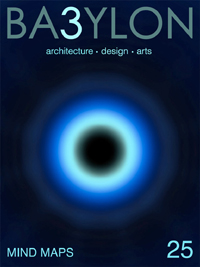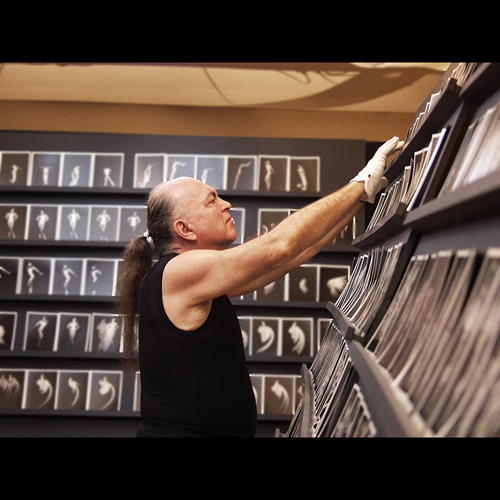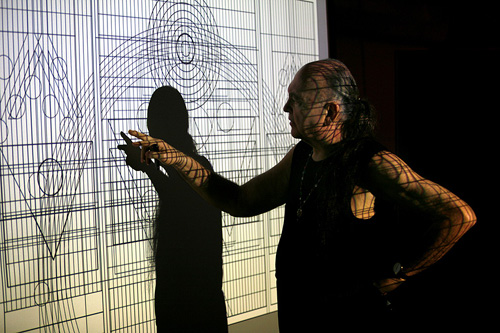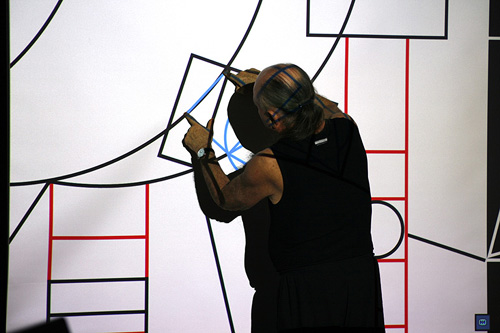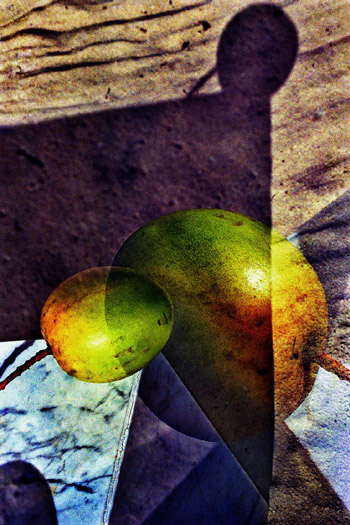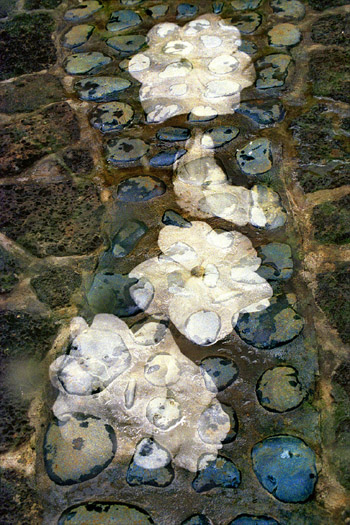|
Transcendental Realism in the Works of Adi Da Samraj:
|
|
My image-art can be characterized as paradoxical space that undermines "point of view". That undermining allows for a tacit glimpse, or intuitive sense, of the Transcendental Condition of Reality, always, inherently, and totally beyond and prior to "point of view". Adi Da Samraj, Transcendental Realism |
Performance art, photography, drawing, writing. Adi Da Samraj incorporates the modern tradition of art as a multiple act of transcendence. At the same time his work transcends twentieth-century modernity and anticipates the unpredictability of the present time, demolishing the cognitive binding agents that proceed according to particular fields. Eastern philosophies, infinitely open American horizons, the luxuriant nature of Fiji as a source of knowledge, all move the perimeters deriving from the Enlightenment pushing us towards Hellenic mastery, which impacts on grammar like a new alphabet with which to re-describe the world.
Geomes, combinations of perfect forms, an expression coined by Adi Da in the wake of Cézanne, opens up to the spontaneous movement of the linead with a speed that liberates from the ego, re-penetrating the representation. A movement that reveals the photographic source of his action among the arts. Lines that overflow out from the surface to open syntax, in his abstract narrative suite without format. Lines like rivulets without epicentre that run across the multi-media sheet. In their sinuous forms, improvised and slippery on the piano, they recall the tracings of John Cage, Fontana Mix that “gushes from bottomless pages”. Music without weight, suspended, where “everything that exists” as Cage wrote “is the centre of the universe, and creation is a multiplicity of centres”.
The music is that of the wind, of light, of artists that come into harmony with Adi Da. “The images are large-scale, impossible to confine, they confuse points of view, they cannot be understood with a glance from a single point of observation,” says Brian O’Mahony, a member of the community that continues to encourage and feed the thought and art characterized by Adi Da.
“The composition of the music that often accompanied his artistic process” explains Antonina Randazzo who is active in the musical expressions created in the community, “takes shape and responds to the images, serving the actions of Adi Da with sound and singing while he photographed, dismantled, overlapped and drew, moving between researchers, who were mostly multimedia and information technology and who accompanied him in the formation of the work, with the development of specifically created algorithms. There was no barrier between the atelier and the landscape, everything was, and still is, part of an environment that penetrates you and at the same time goes beyond in its complexity”.
The A-perspective of Adi Da, the dispersion and particle crushing of the idea of "centre" involves every moment of existence, from that of the shared artistic invention, to the polycentrism of the places from which art springs, and up to a visual representation as the action of transcendence from what is real. Adi Da Samraj’s area of listening is a cosmos, triggered by the interference of the senses, vectors of relationships of artistic experience and journeys into the self that become real in the environment produced by reactions between the bodies. The artwork is an open cognitive process in a systemic vision that does not distinguish the motion from the bodies. The image produced is a threshold defined by the precise ordering of coloured shapes and weights. The geometries displaced by the implicit thrusts of the instinctive gesture force the form to leave the area of its representation to become the medium of an unpredictable process which in turn generates other processes.
“The overall combination of images gives the experience of an ecstatic essence that interprets form as a dynamic relationship between things affected by blasts of light, like a synaesthetic transition from mind to matter. The surface of the image is a mediatic sheet, a screen with an almost-zero thickness, a membrane-like device with which to approach, to almost 'touch', the A-dimensionality of the sign” as notes the philosopher Freddy Paul Grunert, bringing us back to the pages of phenomenological philosophy in Art as Experience by Dewey and L'Oeil et i'Esprit by Merleau-Ponty.
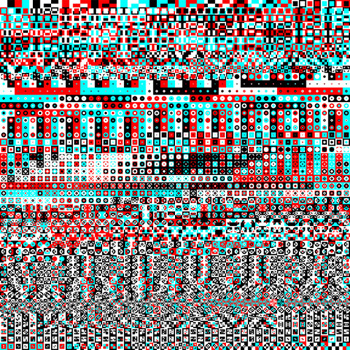
The Scale of Perfection, Part One: NYC, NYCSTET 1 (da Geome Three), 2006 (© 2015 ASA)
click image to enlarge
“Adi Da” says Stuart Gibson, who is involved in the dissemination of the artistic work of Adi Da “uses the body and mind in a phenomenological way, from the inside. The sense is that of receiving through art, a calming delay in the way we perceive the world, an invitation to recall a prior state of unity.”
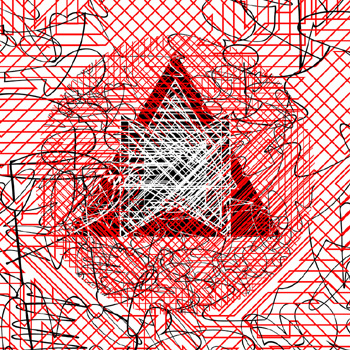
The Near-Sighted Huntsman and The Far-Sighted Hare, or, The Hunter-Hero At your Back Vs. the Edible Rabbit In your Face (Whereas Mind and Body Is Not-Two), 65, da The Struwwelpeter Suite (The "ego"-I and The Straightener): Contemplating The Mind/Body Problem and The Bodily Illusion Of Being a Separate "self", Part Five, 2008
(© 2015 ASA)
click image to enlarge
The whole thing of the art of Adi Da is a system of the knowing and connection, that brings together perception, communication and awareness in a single “lemma”. It is a new concept of language, that deconstructs narrative, shape, geometry, in a subjective open historiography. Subjective as travel from self to open up to “all” of the "other".
What Others Say About Adi Da's Art
| Quotations
from and/or photographs of Avatar Adi Da Samraj used by permission of the copyright
owner: © Copyrighted materials used with the permission of The Avataric Samrajya of Adidam Pty Ltd, as trustee for The Avataric Samrajya of Adidam. All rights reserved. None of these materials may be disseminated or otherwise used for any non-personal purpose without the prior agreement of the copyright owner. ADIDAM is a trademark of The Avataric Samrajya of Adidam Pty Ltd, as Trustee for the Avataric Samrajya of Adidam. Technical problems with our site? Let our webmaster know. |
